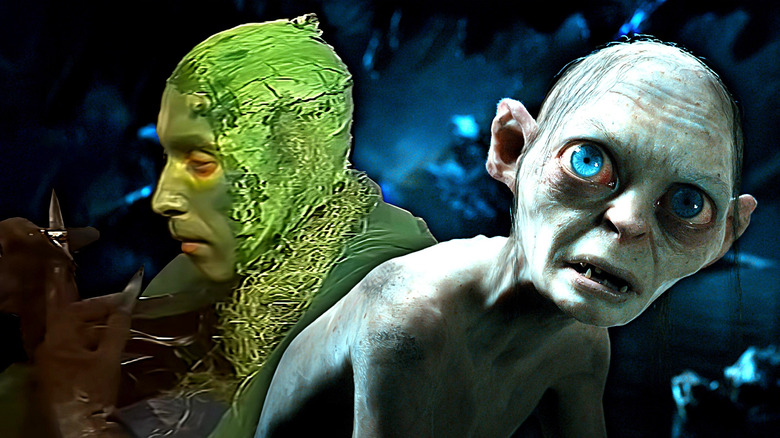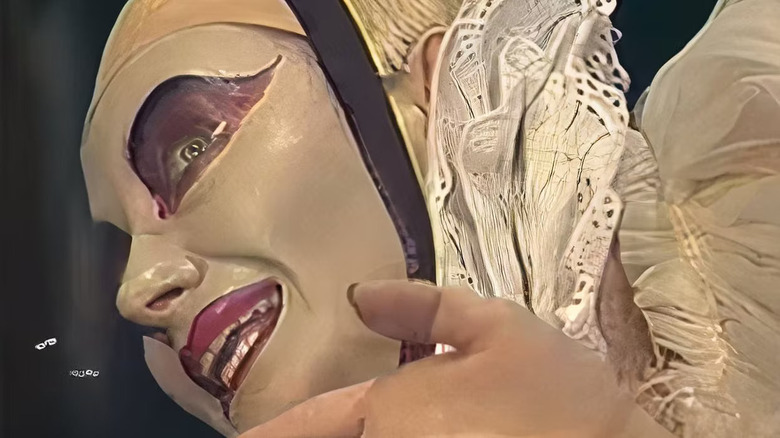Peter Jackson’s “The Lord of the Rings” trilogy can be the gold stallion of this sacred fantastic saga (and for adaptations of Middle-earth, in general), but it is not the first attempt to adapt the famous story of three parts of Jrr Tolkien in a film format. There have in fact had several different iterations of this story, some relatively good, bad and certain terrifying.
Advertisement
Among the entrances to the annals of Middle -earth which entered this last category is a jewel of the 1990s which came directly from the Soviet archives. This completely unique adaptation is entitled “Khraniteli” (which translates into “the guards” or “the guards”). Leningrad Television was produced and released on April 13, 1991, barely eight months before the dissolution of the USSR.
“Khraniteli” was technically published as children’s television program and was considered to be lost media for decades – until he resurfaces when 5TV, the successor to Leningrad Television, reissued it online so that the whole world can see in the 2020s. Adaptation is only made up of two episodes, which collectively cover the events of “The Fellowship of the Ring “. You can see Part 1 And Part 2 With subtitles (it’s in Russian) on Youtube. Together, they go to just under two hours.
Advertisement
Khraniteli is a bizarre but endearing vision of Tolkien’s story
“Khraniteli” is radically different from any other dominant vision “The Lord of the Rings” for many reasons. For example, he uses a serialized format, which recalls more “The Rings of Power” by Prime Video than Jackson’s trilogy. He also mixes theatrical and cinematographic techniques, with the long form structure allowing him to include key characters that Jackson cut off from his films, such as Tom Bombadil (Sergei Parshin), his wife Goldberry (Regina Lialeikite), and Barrow bars (which are also in “Rings of Power”). And unlike most tolkien projects on a big budget, “Khraniteli” was a work of practically unpaid love. Like Georgiy Shtil, who plays Bilbo Baggins, said it Variety in 2021:
Advertisement
“We had almost no budget, no costumes and almost no time. I was pleasantly surprised that we were able to do so little.”
It only takes a few minutes to look at to locate budgetary differences. The costumes are rudimentary, as evidenced by the green outfit of Gollum, while the overall quality of image and sound is very low. Nevertheless, there are many comforting elements, such as light and distinctly Russian music composed by Andrei Romanov of the Russian rock group Akvarium (a contrast certainly with the epic themes of Howard Shore) and the awkward opening monologue on hobbits.
That said, there are parts of the film that become strange, psychedelic and downright terrifying. Lothlórien, for example, has the impression of having opened a box of music on acid. Likewise, wheelbarrow bars are described as creatures dressed in white and painted in the white side that resemble a terrifying manifestation of a circus of the sun. Then, when Boromir (Evgeny solyakov) tries to speak to Frodon (Valery Dyachenko) to give him the only ring, he becomes too personal and catches Frodo’s face as if he reprimanded a child. The two games even ends with Frodon and Sam (Vladimir Matveev) leaving communion by going up in the snow on horses.
Advertisement
What are the other adaptations of the Lord of the Rings?
The existence of an adaptation in land in the middle so far from the beaten track poses the question: are there others like that? And the exciting answer is yes. Yes, there are certainly. There are actually a lot of adaptations of Tolkien’s works to date. Let’s start with the obvious. There is The animated films “Lord of the Rings” and “Hobbit” from the 1970s and 80s by the creators Ralph Bakshi and Rankin / Bass. There is also “The Rings of Power” The Hobbit “by Jackson and” The Rings of Power “, and Warner Bros. creates films related to Jackson’s emblematic trilogy, like anime” The War of the Roirrim “and the next Film “Hunt for Gollum” live (which was delayed at 2027).
Advertisement
In addition to these larger projects, there are a multitude of smaller adaptations of various places over the decades. An example is A hobbit film at 12 minutes and minimally animated From 1966 which was hyper-condensed and extremely inaccurate. (He transforms Thorin into a general, has an interest of the princess for Bilbo, and uses Arkenstone to kill Smauug, which is called the slag here.)
Another wild and offbeat attempt to adapt “the Lord of the Rings” came from Sweden in 1971. He was called “The legend of the ring” (Swedish translation of the title). In this case, the actors worked against a green screen to create a short -term version of the first part of the trilogy related to the Progressive album of Bo Hansson of the same name. Again, we must also grant credit where credit is due here. Despite the confusing nature and low quality of the project, it at least manages to save the Frodo from black runners Elf-Lord-something that all traditional adaptations have failed to adapt with precision so far. (Although He can present himself in “The Rings of Power” at some point, at least.) There is also an animated version of the abandoned USSR of “The Hobbit” made almost at the same time as “Khraniteli”. This one is really lost in history, but Six precious minutes survived Assoy modern viewers with an overview of what could have been.
Advertisement
With projects like these, there are a multitude of content related to fans, in particular An impressive fan film called “The Hunt for Gollum” This was recently put under the spotlight when Warner Bros. has been temporarily withdrawn, probably due to a titling conflict with his own upcoming film of the same name. “The Horn of Gondor” is another excellent piece of adaptation of fans. With movies and television shows, there have been stage plays, musicals, card games (including Magic the Gathering) and even a dramatized audio of the BBC. These adaptations will not stop anytime soon, because the appetite for the content linked to the land of the environment seems only the intensification of popular intellectual property.






